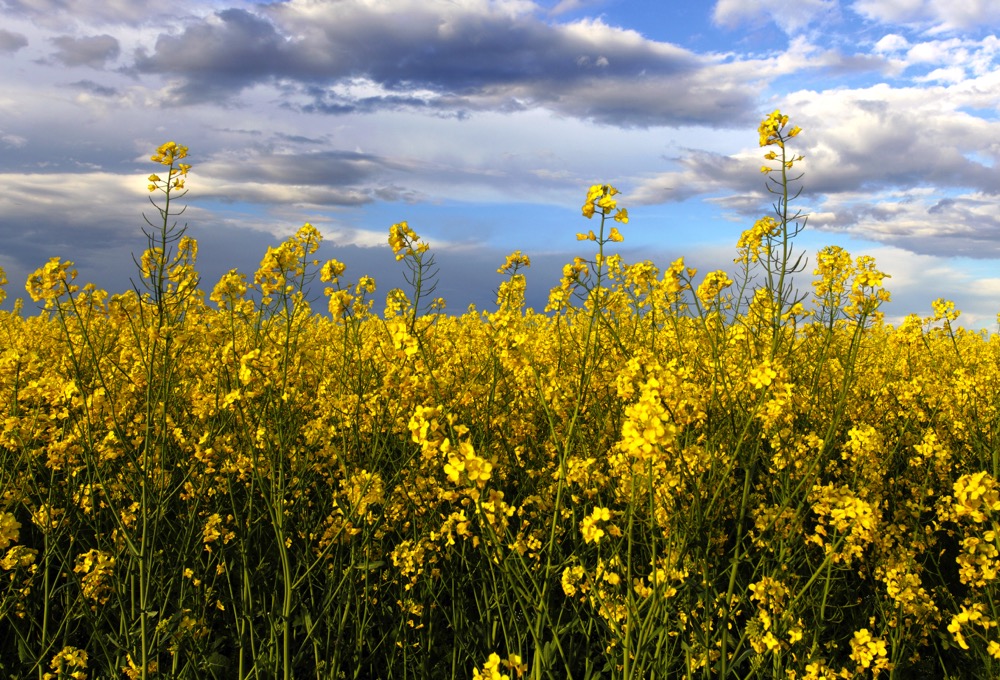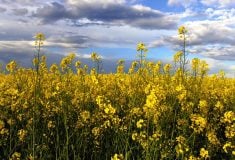(Resource News International) –– Edible pea prices in Western Canada have begun to weaken, with the downward slide being linked to the ongoing harvest and the unwillingness of buyers to step up to the plate and make some purchases.
“The U.S. pea harvest is virtually complete, and both yellow and greens are of very good quality,” said Cam Laxdal, vice-president of Lakeside Global Grains, a pulse and special crop firm based at Dafoe, Sask. There are also huge quantities available, he said.
Read Also

ICE Weekly: No upside for canola if China situation continues: trader
Tony Tryhuk of RBC Dominion Securities said canola should stay rangebound if Canada’s trade war with China continues.
“The U.S. crop alone is putting some downward pressure on bids, with most of the end-users of edible peas going after the U.S. pea supply first,” said Laxdal, who works at Lakeside’s export sales office in Winnipeg.
The U.S. pea supply is expected to cover most of the end-user requirements for at least the next couple of months.
The buyers for the premium markets tend to generally eat up the U.S. peas that are available first, with Canada’s No. 2 pea grades coming in second, he said.
The harvest of the Canadian edible pea crop is also underway, which has been helping to put some downward pressure on bids.
“From the initial reports, there looks to be a lot more edible peas available in Canada this year,” Laxdal said. “The issue of quality, however, is another story.”
“In terms of the yellow peas, the quality of the crop in Western Canada will be good,” he said. “However, in terms of green peas, we are seeing some poor samples coming in.”
Much of the damage was associated with immature seeds and damage from uneven germination.
He acknowledged it was still early in the pea harvest, but based on the early indications the quality of the crop will be down.
Regular-looking
Laxdal said it was hard to know if the lack of high-quality edible green peas will translate into higher cash bids.
There has been a market for the lower green peas in Western Canada over the past couple of years, as long as they are a regular-looking green pea, with a bleaching content no more than 20 to 30 per cent.
“There is a market for these type of peas, but sometimes this market does not get kick-started until halfway through the marketing year,” he said.
As for any peas that don’t make No. 2 Canada, the demand for those is even slower, Laxdal said.
India was expected to make some purchases of yellow peas from Canada, but the amounts may be down from the previous year.
“Right now peas from Russia, Ukraine and France have been going into India, at some pretty cheap prices,” Laxdal said. “Canada is at present unable to compete with those values.”
Demand from end-users of Canadian edible peas has also been slow.
“You have to remember that buyers of Canadian peas have had to pay up for both greens or yellows for quite some time, and now that production in Western Canada looks to be larger, they have basically moved to the sidelines to await lower prices,” he said.
Edible prices for green peas, based on Prairie Ag Hotwire data, currently range from $6.80 to $7.75 a bushel and for yellows, from $5.50 to $5.60 a bushel.
At the end of July, prices for green peas ranged from $7.40 to $7.75 a bushel while yellows ranged from $6.20 to $6.61 a bushel.















